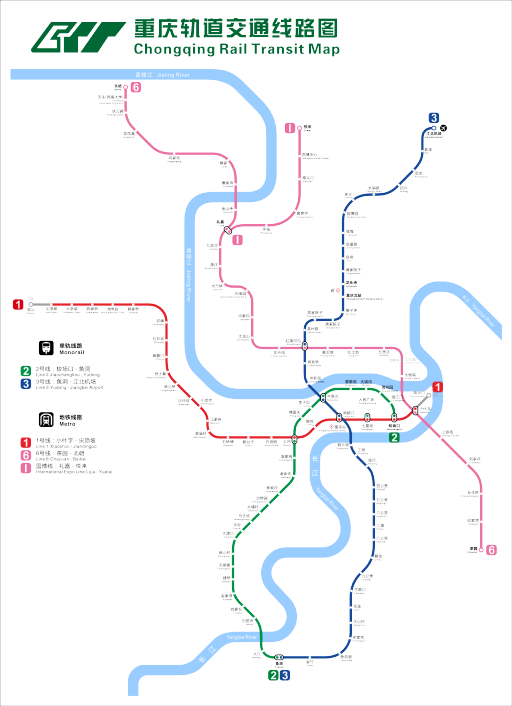The Chongqing Metro has a total of 264 kilometers in track length spread among six commercial lines and 153 stations, with more stations coming soon. The metro´s business hours are from 6:30 a.m. to 11:30 p.m. all week long, all year round, including holidays. The Chongqing Metro charges depending on the distance travelled. Its cheapest price per journey is of 2 Yuan, while the most expensive one is of 10 Yuan. The Chongqing Metro has a direct connection with the Chongqing-Jiangbei International Airport at line 3, which has a stop just below the airport.
The Chongqing Metro
Chongqing is a municipality located within China´s continental area. It was founded on 1997 with the goal of diversifying the area´s economic activity. It has an estimated population of around 30 million inhabitants, 18 million of which live on the urban areas of the municipality, while the rest live on small farms that are far away from the crowded cities.
The main city in the region is Chongqing, where almost 8 million citizens live. The districts of Fuling and Wanzhou are ranked just below Chongqing in terms of number of inhabitants, and both can also be considered cities. In total, there are 21 districts that comprise this municipality, which is considered one of the most populated areas in the country.
As a leading industrial region on this Asian country, Chongqing has evolved radically on the last 20 years. This fact has resulted in a significant improvement of the municipality´s infrastructure.
Among the engineering projects of greatest importance in the city is the Chongqing Metro, which gives transportation to the city of Chongqing, as well as the surrounding districts.
Its construction began on 1999 with the help of Japanese funding, and it began operations on the year 2005. However, construction has not stopped since then. Currently, this system´s huge network already has 264 kilometers of railway spread throughout six commercial lines and 153 stations, and more stations are being built each year.
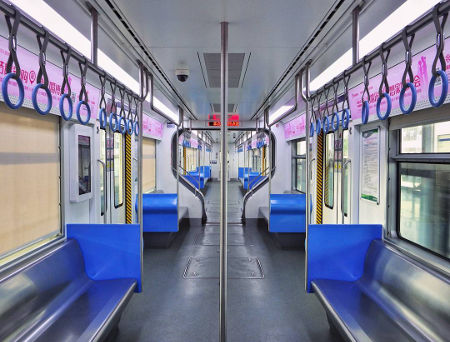 Chongqing Metro
Chongqing Metro
Lines and Stations
The Chongqing Metro gives transportation to the city of the same name and the adjacent districts of said city. It has a length of 264 kilometers, and it connects the far away communities and remote towns with downtown Chongqing.
Currently, there are six lines built, and the authorities have planned to build a total of 18 commercial lines, which will add a total of 820 kilometers to the network´s total length.
The lines that are currently finished are the following:
Line 1
The Chongqing Metro´s line 1 reaches the western part of the city. Its trains depart from Chaotianmen, and arrive at Daxuecheng. One of its features is its vehicles´ signature red color. It began offering service on July 28th, 2011, when the first 16 kilometers of the network were inaugurated, with trains that departed from Chaotianmen, at Chongqing´s downtown area, and went to the west of the city, crossing through Shuangbei, until they finally reached Daxuecheng. Currently, this line is comprised of a 38 kilometer-long track, where 24 stations are present. It was planned in such a way that it can hold a ridership of 36 thousand passengers per hour.
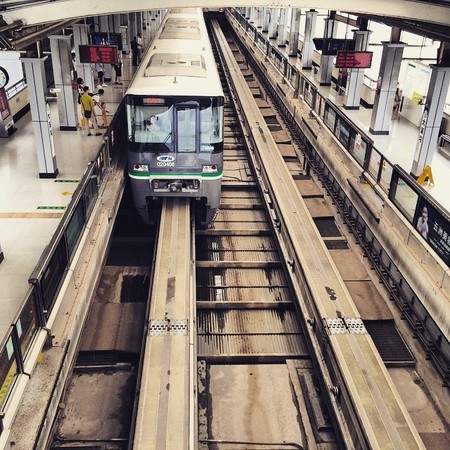 Chongqing People's Square
Chongqing People's Square
Line 2
Line 2, which is recognized by the signature green color of its trains, was the first line of the Chongqing Metro, opening on June 18th, 2005. At the same, this line became the first metro line located on the west of the Popular Republic of China. Its journey begins at Jiaochangkou, and ends at Yudong, offering transportation to the southeastern part of the city. Also, instead of being yet another heavy metro line, this line has the uniqueness of being a lines designed as a monorail, and it was built using Japanese technology from Hitachi Monorail. Currently, it has 31 kilometers, where 25 stations are built. This line transports an approximate of 350 thousand passengers per day.
Line 3
The Chongqing Metro´s line 3 was inaugurated on April 5th, 2007, with the goal of connecting the northern part of the city with its southern part. The trains from the network depart from Lianglukou, transiting around the main rivers that separate the city, the Yangtze River and the Jialing River, and stop at Yuanyang. Later, and expansion was built at the north of the metro´s network to connect to the Jiangbei Airport. Additionally, a similar expansion was built at the south so that the trains could reach the Yudong terminal. This line has the characteristic of having all of its rolling stock painted in dark blue. These vehicles transport one million passengers daily at this line´s 45 stations and 66 kilometers of railway.
 Chongqing Metro
Chongqing Metro
Line 5
The trains from line 5 from the Chongqing Metro, which can be easy to recognize thanks to their signature turquoise color, depart from the Liangjiang region, and stop at Jiangjin. The network will have a 70 kilometer-long railway, some of which are partially operational, while others are under construction. It will have 33 stations. Forty-eight kilometers of the metro´s tracks will be underground, while the remaining 12 will be built to be elevated. The first part of the line was inaugurated on December, 2017, year in which 10 stations were operational. According to official estimates, the line is planned to be completed by the year 2025.
Line 6
Line 6 from the Chongqing Metro was inaugurated on September 28th, 2012. The network has an extension of 75 kilometers, where 33 stations are located. Most of these stations are located on the regions of Nan’an, Yuzhong and Jiangbei. The trains from this line have a signature pink color, which helps people avoid confusing them with trains from other lines. It is considered the second heavy metro line of the city, and it is also one of the largest. However, regardless of its huge size, it only transports 450 thousand passengers per day. Compared to other lines, which transport around one million people per day, this line falls short.
Line 10
Line 10 from the Chongqing Metro is characterized for having purple trains, and it is known by many as the “airport line” due to its connection with the city´s airport. Its construction began on the year 2014, and it was inaugurated on December, 2017. Its trains connect the north of the city with the south of it, giving transportation to the districts of Yuzhong, Jiangbei and Yubei. Currently, it has 27 stations and a 34 kilometer long network. However, there are plans to expand this network to make it have 45 kilometers of railway. According to estimates from the project´s managers, the remaining missing tracks should be built before 2020.
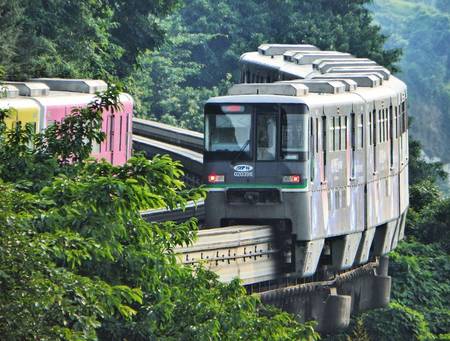 Chongqing Metro
Chongqing Metro
Transfers
The Chongqing Metro has plenty of transfers within its own lines, as well as with other means of transportation of big proportions. Below you will find a detailed list of stations where you can make a transfer:
Line 1
- Xiaoshizi: Transfers to Line 6.
- Jiaochangkou: Transfers to Line 2.
- Lianglukou: Transfers to Line 3.
- Daping: Transfers to Line 2.
Line 2
- Jiaochangkou: Transfers to Line 1.
- Niujiaotuo: Transfers to Line 3.
- Daping: Transfers to Line 1.
- Yudong: Transfers to Line 3.
Line 3
- Yudong: Transfers to Line 2.
- Lianglukou: Transfers to Line 1.
- Niujiaotuo: Transfers to Line 2.
- Guanyinqiao: Transfers to Line 9.
- Hongqihegou: Transfers to Line 6.
- Bijin: Transfers to the airport line.
- Jiangbei: Transfers to Line 10.
Line 5
- Dalongshan: Transfers to Line 6.
- Xietaizi: Transfers to Lines 1 and 5.
- Shiqiaopu: Transfers to Line 1.
Line 6
- Xiaoshizi: Transfers to Line 1.
- Hongtudi: Transfers to Line 10.
- Hongqihegou: Transfers to Line 3.
- Dalongshan: Transfers to Line 5.
- Yuelai: Transfers to Line 10.
Line 10
- Nanping: Transfers to Line 3.
- Qixinggang: Transfers to Line 1.
- Zengjiayan: Transfers to Line 2.
- Hongtudi: Transfers to Line 6.
- Jiangbei: Transfers to Line 3.
- Yuelai: Transfers to Line 6.
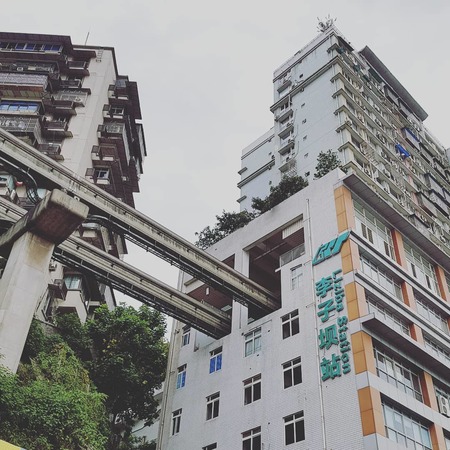 Chongqing
Chongqing
Schedule
For a metro of such huge proportions, and considering the large number of people that it moves on a daily basis, one could think that the Chongqing Metro operates for, at least, 20 hours straight per day.
However, that´s far from the truth. This subway system begins offering service at 6:30 a.m., and it´s available to the passengers non-stop until 11:30 p.m., adding up a total of just 17 hours of service.
This schedule is the same all week long, every day of the year, including holidays and nationwide celebrations.
However, the train frequency does vary depending on the day. During peak hours, from Monday to Friday, the vehicles arrive at the platforms in an average of three minutes. Outside of these hours, the trains arrive each five or 7 minutes.
After 10 at night, as well as on Sundays, it is possible that the waiting times become longer, lasting between 7 and 10 minutes. In the case of Saturdays, the train frequency lasts between five and 7 minutes during the entire day, which is the normal train frequency for these days.
Fares
The Chongqing Metro uses a fare system based on the number of kilometers travelled by the passenger. The tickets are valid for all the lines within the network, including the heavy train lines, such as the monorail.
Once the passengers have entered the payment area, they only have 180 minutes to board any of the trains for the network since, otherwise, the payment machines will force you to pay the most expensive fare for a ride.
Right after crossing the turnstiles, the aforementioned time limit of 180 minutes will start the countdown in which you will have to reach your destination. The lowest fare is of two Yuan, while the most expensive one is of 10 Yuan.
You can pay for your journey by buying either a standard ticket, which can be either a one-trip journey or a round-trip journey, or a reloadable card known as the Livable Changtong Card. This last one can come in multiple formats, including the standard one, the discounted format, the student format, and the senior citizen format.
Price chart
- Between 0 and 6 kilometers: 2 ¥.
- Between 6 and 11 kilometers: 3 ¥.
- Between 11 and 17 kilometers: 4 ¥.
- Between 17 and 24 kilometers: 5¥.
- Between 24 and 32 kilometers: 6 ¥.
- Between 32 and 41 kilometers: 7 ¥.
- Between 41 and 51 kilometers: 8 ¥.
- Between 51 and 63 kilometers: 9 ¥.
- 64 kilometers or more: 10 ¥.
Tickets
- One-trip Ticket: This is the simplest option to travel on the metro, and it is only valid during the day that it was purchased, with no refunds allowed. They are limited to only be used by a single person at the station where it was bought. Therefore, if you buy the ticket at a line 1 stop, for instance, you can only use it in that station on the same day when it was obtained.
- Holiday Ticket: This type of tickets are only available during holidays or other important nationwide celebrations, and it offers a series of benefits to the passengers that may want to go to the celebrations organized on the city. This ticket cannot be refunded, whether you had used it or not, and you should use it within the time limit that you had been previously told.
- Fixed ticket pass: This ticket is only valid for a period of time that has to be chosen by the user, who has the benefit of choosing other options to customize his ticket. It must be used by only one person, and it cannot be refunded.
- One-day Ticket: This ticket can be used all day long without a problem. It is valid for only one person, and you will have to pay an additional fare alongside the cost of the ticket for your journey.
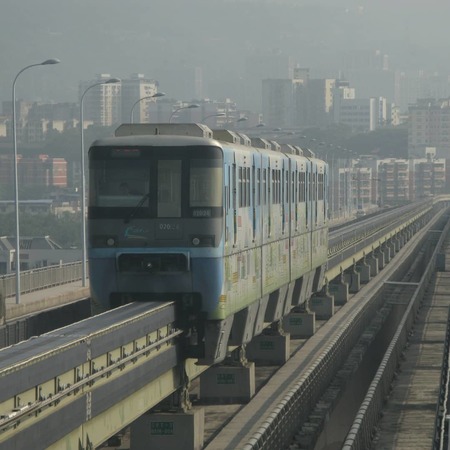 Chongqing Metro
Chongqing Metro
Livable Changtong Card
The Livable Changtong Card allows the passengers to reload the amount of cash of their cards that they may find suitable to travel the metro. Also, there are different versions of this card available, such as cards for students and for senior citizens. Its fares are shown below:
- Between 0 and 6 kilometers: 2 ¥.
- Between 6 and 11 kilometers: 3 ¥.
- Between 11 and 17 kilometers: 4 ¥.
- Between 17 and 24 kilometers: 5¥.
- Between 24 and 32 kilometers: 6 ¥.
- Over 32 kilometers: 7 ¥.
Connection to the airport
Luckily for locals and tourists, the Chongqing Metro has a direct connection with the Chongqing-Jiangbei International Airport thanks to line 3, which has a stop just below the airport.
You will only have to enter the subway network, buy your respective metro ticket, and either board one of the line 3 trains or make a transfer to this line, depending on the case.
The price to pay will depend on the distance between the station of origin and the airport. Remember that the fare depends on the number of kilometers travelled by the passenger. Then, after boarding the train, you will have to make sure that it will disembark at Terminal 2 station from Jiangbei Airport (江北机场T2航站楼), which is below the airport´s ground level.
Using the metro is the fastest way of reaching the city´s downtown area, as well as the city´s outskirts and the surrounding towns. However, outside of the airport, you will also find taxi lines that you can use, but be aware that the drivers only speak in Chinese since, given that Chongqing is a city close the center of China, it is not easy to find people that speak in English.
Fun Facts
- Each year, the Chongqing Metro transports over 700 million passengers. This number of people is equal to over 50% of the city´s total population.
- By the time that all of the stations of the Chongqing Metro network are built, the network will be 820 kilometers long, becoming the longest metro system in the world.
- The system´s line 2, which was inaugurated on 2004, was the first monorail commercial line on Chinese Land.
- The people in charge of the project have had to solve multiple issues related to the irregular soil of the region. This has been the reason why there are both elevated and underground routes for the metro.
- The first plans to build a metro system on the city date back from the 60s. However, these plans were not taken seriously until the late 90s.
Rules
- Avoid blocking the way to other passengers.
- Make sure that your belongings do not disturb other passengers, and that it doesn´t block the train´s doors.
- Children over six years of age require to buy a ticket to enter the trains.
- Do not lean on the glass that separates the platforms from the metro´s tracks.
- You cannot bring fireworks.
- You cannot enter the facilities with objects that are flammable.
- Smoking on the metro´s stations is not allowed.
- You cannot run on the network’s stations.
- It is strictly prohibited to consume alcohol on the metro´s stations.
- You cannot enter the metro´s stations under the influence of alcohol and drugs.
- Be courteous with the staff that works on the Chongqing Metro´s facilities.
- Follow the instructions given by the metro´s security staff.
- Strollers should be located on the frontal and back ends of the trains.
- Do not play any multimedia content without headphones.
- Do not attempt to enter or leave the wagons if you had already heard the beeping sound indicating that the doors will close.
- You cannot interrupt the metro´s personnel from doing their duties.
- You cannot beg while waiting on the metro´s facilities nor while travelling on the trains.
- You cannot record any video on the system´s facilities without previous authorization from the metro´s authorities.
- You cannot bring sharp objects if they are not properly protected and stored.
- You cannot carry firearms, unless you are a police officer from the city on duty.
Future Expansions
The Chongqing Metro attempts to be the biggest subway in the world since it is planned to have 820 kilometers of track length and 18 commercial lines in total. It currently has six lines built, while the remaining 12 lines are either being built or are being planned.
For instance, line 4, is the closest line that will be inaugurated, opening on mid-2019. It has 8 stations and 15 kilometers of railway for the time being, and it will attend the districts of Jiangbei and Yubei.
The next inauguration planned by the metro´s authorities, which will open on 2020, will be line 9. This line will have an extension of 40 kilometers, and will have 30 stations. The districts that will benefit from this project will be Shapingba, Yuzhong, Jiangbei and Yubei.
The current budget is of 100 million Yuan, which have been mostly spent on the project since the construction of the metro has been done since 2016.
Touristic attractions
Near line 1´s Ciqikou station lies the Ciqikou Old Town, where the local citizens and tourists meet together to visit a market full of street food shops and small souvenir stores.
Once you enter the narrow streets of this small neighborhood, you will feel as if you had travelled back in time when Chongqing still was a small town full of artisans, which have disappeared due to the current unstoppable economic growth of it.
Visiting this place is an ideal opportunity to try the local gastronomy while enjoying the rudimentary architecture that make a stark contrast with the skyscrapers on the horizon. If you plan to stay on the city for a while, this is a place that you cannot miss.
Additionally, another place that should be ignored is the Hongya Cave, located at a few blocks from Xiaoshenzi station, which serves as a stop for lines 1 and 6. This building serves as a great landmark that shows the culture and history of Chongqing, since its origins date back from the year 1046 BC.
This place is especially attractive when the night falls since this is the time when lights decorate the surroundings, which serve as a beautiful reference to be used in mail stamps. The restaurants in the vicinity bring a cosmopolitan and a very modern atmosphere, since this place has become in a famous nightly meeting point in Chongqing.
Metro map of Chongqing
Map via commons.wikimedia.orgSee map full resolution. It may take a little bit to load.
Chongqing Monorail map
- Also Known As: Monorail
- Passengers/Day 1,3M
- Fares: access/exit gates
- 24h operation: No
- Air Conditioning: Yes
- Walk between platforms: Yes
- Driverless trains: No
- Screen Doors Platforms: The three underground stations (Daping, Linjiangmen, and Jiaochangkou) have PSDs
- ¥2.00 - 7.00
- Chongqing Metro Official Website
- Tlf: +86 023 6800 2222
Help us
If you consider that the information we provide is wrong, not accurated, outdated, translation contains errors, and you would like to help us to improve the file...you can contact us here.
Feel free to contact us if you dont find the system you're looking for and we'll add it as soon as we can!
Thank you very much!







